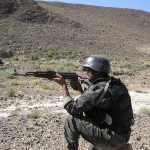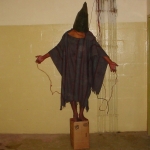Popular Uprising Against Barrick Gold in Tanzania sparked by killing of local
Why would "criminals" set fire to millions worth in mine equipment?
How was it that these "intruders" had an estimated 3,000 - 4,000 people backing them up?
In what appears to be a spontaneous civilian movement against Barrick Gold, the world's largest gold miner, thousands of people invaded Barrick`s
North Mara Gold Mine this week in Tarime District and destroyed equipment worth
$15 million. Locals say that the uprising was sparked by the killing of a local, identified as Mang'weina Mwita Mang'weina. According to a Barrick Public Relations officer (as reported by the Tanzanian Guardian newspaper), "the intruders stoned the security personnel relentlessly until they
overpowered them. The guards abandoned their posts and retreated to
safety."
While
Barrick implies that "high levels of crime" are the cause of this
recent outbreak, recent reports suggest a different picture.
Allan Cedillo Lissner, a photojournalist who recently documented mine life near the North Mara mine, explains:
and local communities has created a climate of fear for those who live
nearby. Since the mine opened in 2002, the Mwita family say that they
live in a state of constant anxiety because they have been repeatedly
harassed and intimidated by the mine's private security forces and by
government police. There have been several deadly confrontations in
the area and every time there are problems at the mine, the Mwita
family say their compound is the first place the police come looking.
During police operations the family scatters in fear to hide in the
bush, "like fugitives," for weeks at a time waiting for the situation
to calm down. They used to farm and raise livestock, "but now there are
no pastures because the mine has almost taken the whole land ... we
have no sources of income and we are living only through God's wishes.
... We had never experienced poverty before the mine came here." They
say they would like to be relocated, but the application process has
been complicated, and they feel the amount of compensation they have
been offered is "candy."
Evans Rubara, an investigative journalist from
Tanzania, blames this action on angry locals from the North Mara area
who are opposed to Barrick's presence there. "This comes one week after
Barrick threatened to leave the country based on claims that they
weren't making profit," comments Evans after explaining that Barrick
does not report profit to avoid taxes in the country. "This is a sign
to both the government of Tanzania and the International community
(especially Canada) that poor and marginalized people also get tired of
oppression, and that they would like Barrick to leave."
Only one week prior, Barrick's African Region Vice President, Gareth Taylor threatened
to leave Tanzania due to high operating costs, claiming that the company did not make profits there. Barrick's Toronto office
quickly denied this report, stating that "the company will work with
the government to ensure
the country's legislation remains 'competitive with other
jurisdictions so that Tanzanians can continue to benefit from
mining.'"
Interestingly, Taylors threat came shortly after he attended a workshop to launch the Extractive Industries Transparency Initiative (EITI) in Dar es Salaam.
One thing is clear, though; these reports of hundreds, backed by thousands, of villagers attacking mine infrastructure reflects a resentment that goes beyond mere criminal
action. And this surge in violence should be examined in the context of
the on-going exploitation and repressive environment surrounding the
mine.
- 23 Private Security
- 104 Globalization
- 110 Trade Justice
- 116 Human Rights
- 183 Environment
- 185 Corruption
- 208 Regulation



